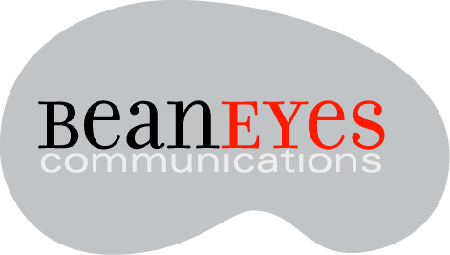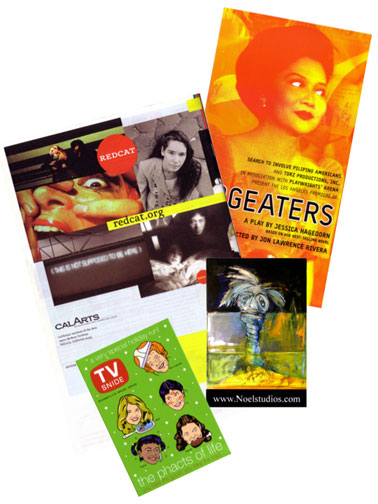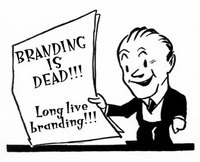 This piece builds on this one, which you may or may not want to read as well.
This piece builds on this one, which you may or may not want to read as well.
Once upon a time, when I was very much like I am today, only with a lot more income and a lot less happiness, I found myself shopping in a store that sold nothing but sexy ladies' underwear.
Now, if you know me in even the most passing of ways, you know this is a very unusual thing, and if you've known me in the Biblical sense, you're probably re-reading the above sentence to make sure it says what you think it said. For I am no more a lady of lingerie than I am a lady of pedicures, blender drinks or fancy jewelry. Not that I judge! To each her own, and more power to her. But I buy my panties plain, on the cheap and under duress. Any top/bottom color coordination happens strictly by accident, luck of the drawer, if you will, and most of it looks better off than on. Which, to my mind, anyway, is the main point of underwear vis-à-vis your vis-à-vis-type situations.
True to form, I was there at this sexy lingerie store under duress as well. My boss at the time, a chic and lovely woman whom I'm sure had no end of matching drawers in her own drawers, had extracted from me a promise: that while I was in Los Angeles on my next production gig, I would go to this particular lingerie store and buy myself some high-end undergarment of the completely superfluous variety. It had to be expensive, in other words, and it had to be sexy.
Half of the store was dripping with lace and the rest of it vibrated with the various colors of the rainbow. Promises or no promises, there were some depths to which I would not stoop, which pretty much left Sheer, Black and Clingy. I found some one-piece something or other that looked okay, sexy, even, I guess, given the right lighting and enough liquor. It cost $75 (I still remember!), it itched (the better, I supposed, for wishing oneself out of it) and served no actual, foundational purpose.
I tried it on at least fifty times, and wore it exactly three. Each time I felt not only stupid for having wasted $75 on a shitty piece of nylon but whatever the opposite of sexy is. And itchy. Off it went to Goodwill.
I am sure it made a terrific addition to some girl's Slutty Olympic Swimmer costume that Halloween.
* * * * *
I was having coffee with The Chief Atheist while back, one of those occasional treats I look forward to with a genuine pleasure I would not have believed possible ten years ago when we were fresh out of the marriage. He is a sincere, smart and forthright fellow; also, he is hilarious. And for my part, I am fairly pleasant to be around now that I'm not a miserable wannabe stewing in her own hot soup of envy and denial.
At some point during the conversation, we were talking about the shapes our day-to-day lives had taken now that we were no longer together, and now that I was (finally) living alone. His, as always, is filled with lots of laughter and activity, always well-populated with friends, colleagues, or loved ones. Mine, by contrast, is filled mostly with quiet and work, punctuated by spikes of peopled activity, and dotted lightly with extremely low-key relaxation amongst one or two close friends. Excepting perhaps the financial freedom to have it all more so, neither one of us could be happier with the way things had turned out.
We had just about wrapped up the topic when he paused, smiled just a bit and said, "I never really got it while we were together, but I finally realized it recently: you weren't kidding; you really did need more time alone than most people."
He's right, I really do.
* * * * *
The good news about the Internet is that it makes it really easy to get ideas; the bad news is that it makes it really easy to think you should be applying them to yourself, now!
The always-on, always-up nature of the Internet is great when you're feeling low and need to get you some hot baby penguin action. It's not so great when you're feeling unmoored and adrift, in an in-between phase, unsure of what the next shore will look like, much less how to get there. This accounts for a lot of the business bipolar disorder you see on the web: constant overhauling of business models, flip-flopping of pricing, re-branding of websites, and of course, rampant copycatting of UI elements, visual identity and even language.
I'm not talking about evolution or emulation. Things can and should change, and we all learn by adopting and mimicking the styles of those we admire, all of us, even the geniuses (and if you don't believe me, go rent the Scorsese documentary on Dylan. It'll blow your mind.)
But if you're doing things because you see other people doing them, beware. If you're using things because so-and-so is, beware.1 Not only do you have no idea of why they've chosen do x, y, or z, you can't even be sure it's working for them. Or that it will for much longer. To borrow Seth Godin's astute summing-up of the futility of emulation in this era of constant and rapid-fire change, "if you're looking for a map...you've totally missed the point." He was talking about business models, but it works for positioning, for identity, for personal trajectory as well. Today's opportunity lies in uniqueness and novelty, in innovation and personal touch, and the quickest way to quash that is to lose the thread of yourself in the tangle of other people's business.
Does this mean you should not surround yourself with people you admire? Read good things? Take in with an eye toward what works, what draws you in and delights you? Of course not. If anything, I would do more of it, and more broadly. As with food, so with brain food: the healthiest diets seem to be the most varied (provided you're not just varying which drive-thru window you pull up to).
A good exercise for making sure you're hewing to you is to be able to point to any element of your life and say why you chose it and why you love it. A sofa. A fragrance. A logo. An entrée. A cellphone. A lover. A project. A pair of jeans. A business partnership. A morning spent on Facebook. An evening spent with American Idol.
Even a blog post.
I wrote this one because I get challenged a lot for my business and marketing decisions, or the lack thereof.2 I can point to much of what looks crazy to the outside world and tell you why I do it my way. But there's a distressing amount that I cannot explain with anything better than I don't want to be like them. Or I hate that thing, over there. Or just I don't wanna! You can't make me!
Which, for a person who not only is into the whole self-actualization thing but who also hires herself out to help people sort out what's working and what's not, is not only hypocritical, but more than a little nutty.
On the other hand, who among us isn't a work in progress?
* * * * *
Are you a philistine for not personally sweating each individual detail of your life? Hell, no. Neither am I, and I'll wager I have a helluva lot more free time to muse about these things than you.
Could you benefit by thoughtful ongoing review of particular elements of your life, your work, your outward face, your inner workings? I cannot see how you couldn't. The unexamined life, and all that.
If you don't know who you are, start there. If you've got a pretty good handle on that, pick one aspect of your life (or your business, or your marketing) and start doing an inventory to see if things jibe.
Is this me or is this something I'm defaulting to? Is this something I want, or something I think someone else wants of me? Is this an outdated me, and am I okay with changing it?
It is not a speedy process; when you rush it, you end up with things like a $5000 website you hate in three months and want to completely change. Or a $75 onesie for whores.
Do not look to the left or the right. Look at yourself.
Chances are, that's what that other guy you admire so much did...
xxx c
1And of course, if you're using things you dislike because you think you should, or you think it will get you there faster, just stop right now.
2A lack of a decision is always a decision. Think of it as passive-aggression against yourself, and see if that doesn't move you to get off the dime and do something about something.
Image by k david clark via Flickr, used under a Creative Commons license.











 A couple of days ago, I read a brief article/interview with
A couple of days ago, I read a brief article/interview with  One of my continual frustrations as a theater rat with a scrabbly foot in the design world is the unforgivable lack of pretty in most show flyers. They'll pay the lighting designer, they'll pay the costume designer, they'll sure as shit pay the director, they'll get everything on stage looking Sunday-go-to-meetin' purty, and then crap all over themselves with an ill-conceived, poorly designed flyer.
It's like my crazy Polish art teacher whined about back in silkscreen class: the packaging on materials being sold to artists is among the dullest and horsiest design there is. Ah, sweet irony.
One of my continual frustrations as a theater rat with a scrabbly foot in the design world is the unforgivable lack of pretty in most show flyers. They'll pay the lighting designer, they'll pay the costume designer, they'll sure as shit pay the director, they'll get everything on stage looking Sunday-go-to-meetin' purty, and then crap all over themselves with an ill-conceived, poorly designed flyer.
It's like my crazy Polish art teacher whined about back in silkscreen class: the packaging on materials being sold to artists is among the dullest and horsiest design there is. Ah, sweet irony.  Back in the go-go '80s, my art director and I made silk purses out of some serious sow's-ear assignments and so were let into the inner sanctum: pitching spots for the second pool of a wildly successful TV campaign for the agency's big, fat American car account.
Back in the go-go '80s, my art director and I made silk purses out of some serious sow's-ear assignments and so were let into the inner sanctum: pitching spots for the second pool of a wildly successful TV campaign for the agency's big, fat American car account.